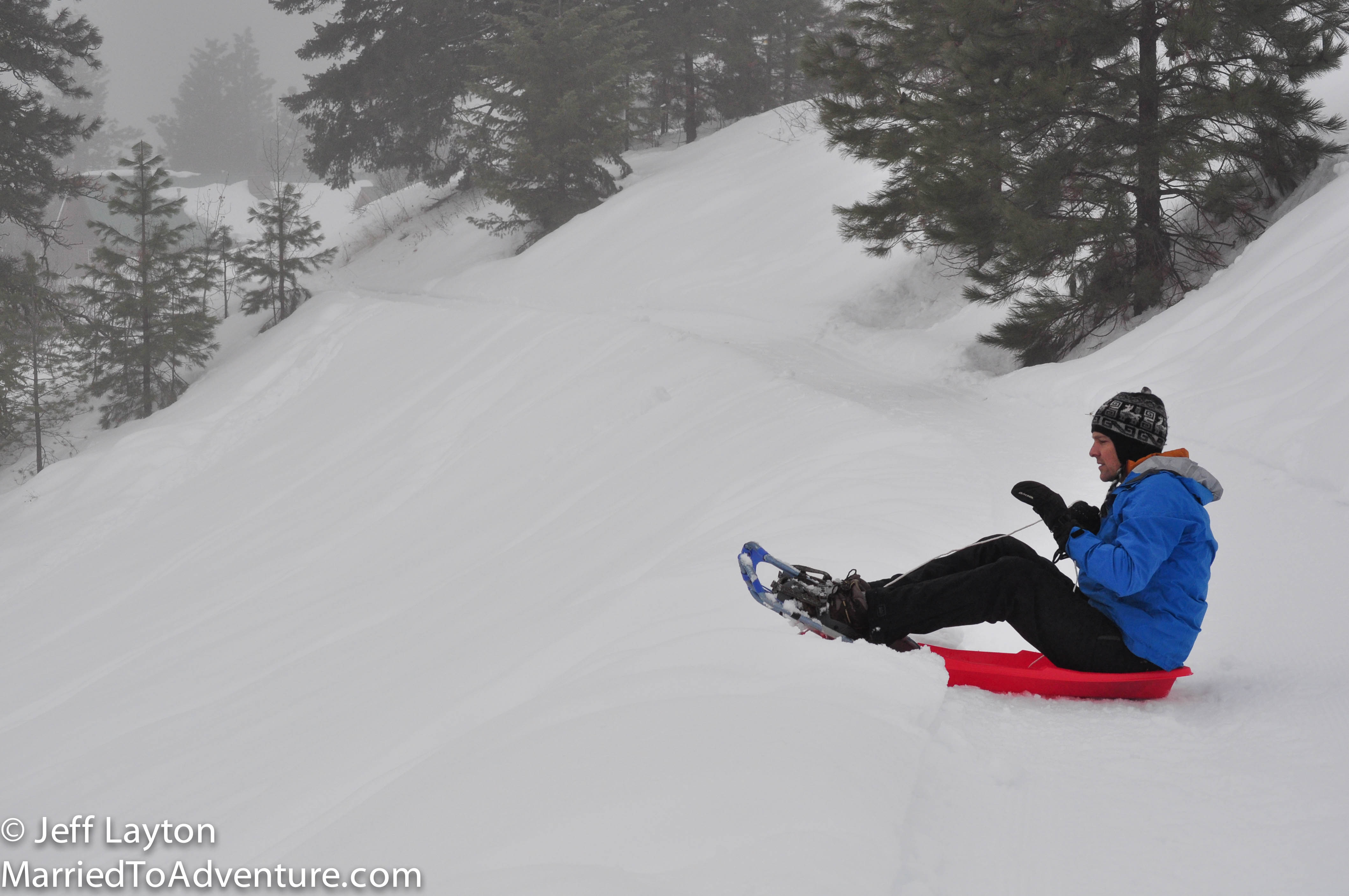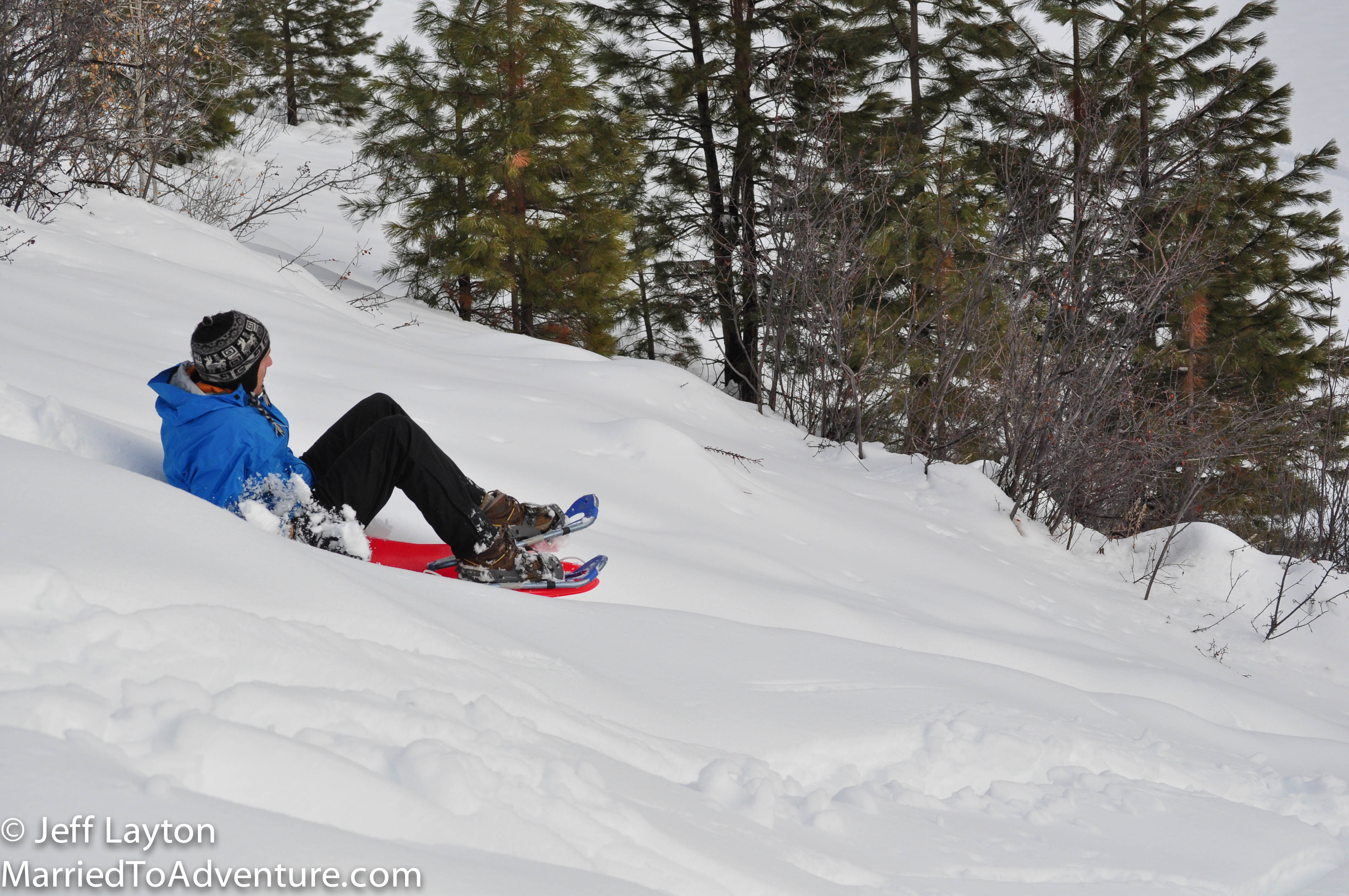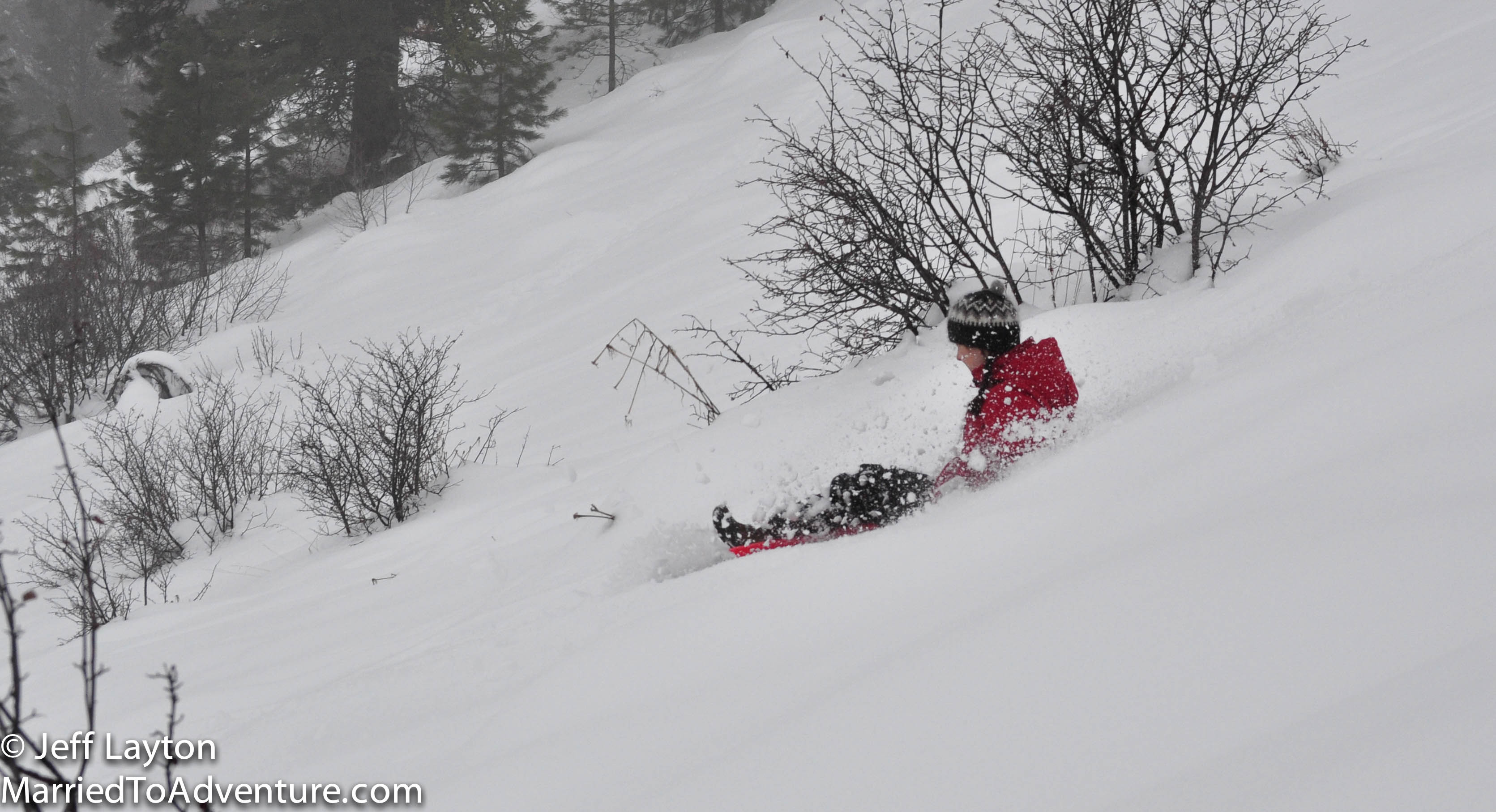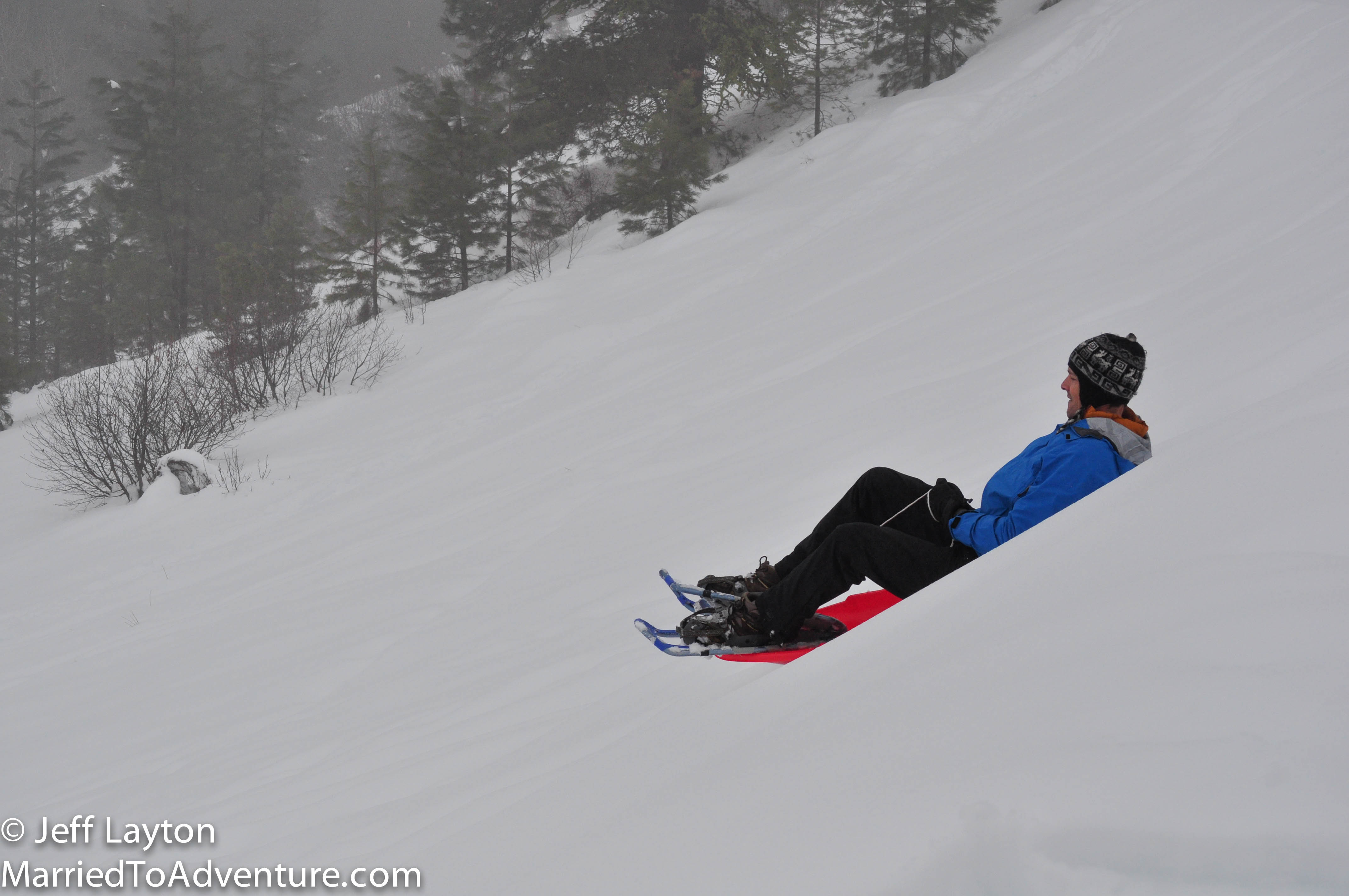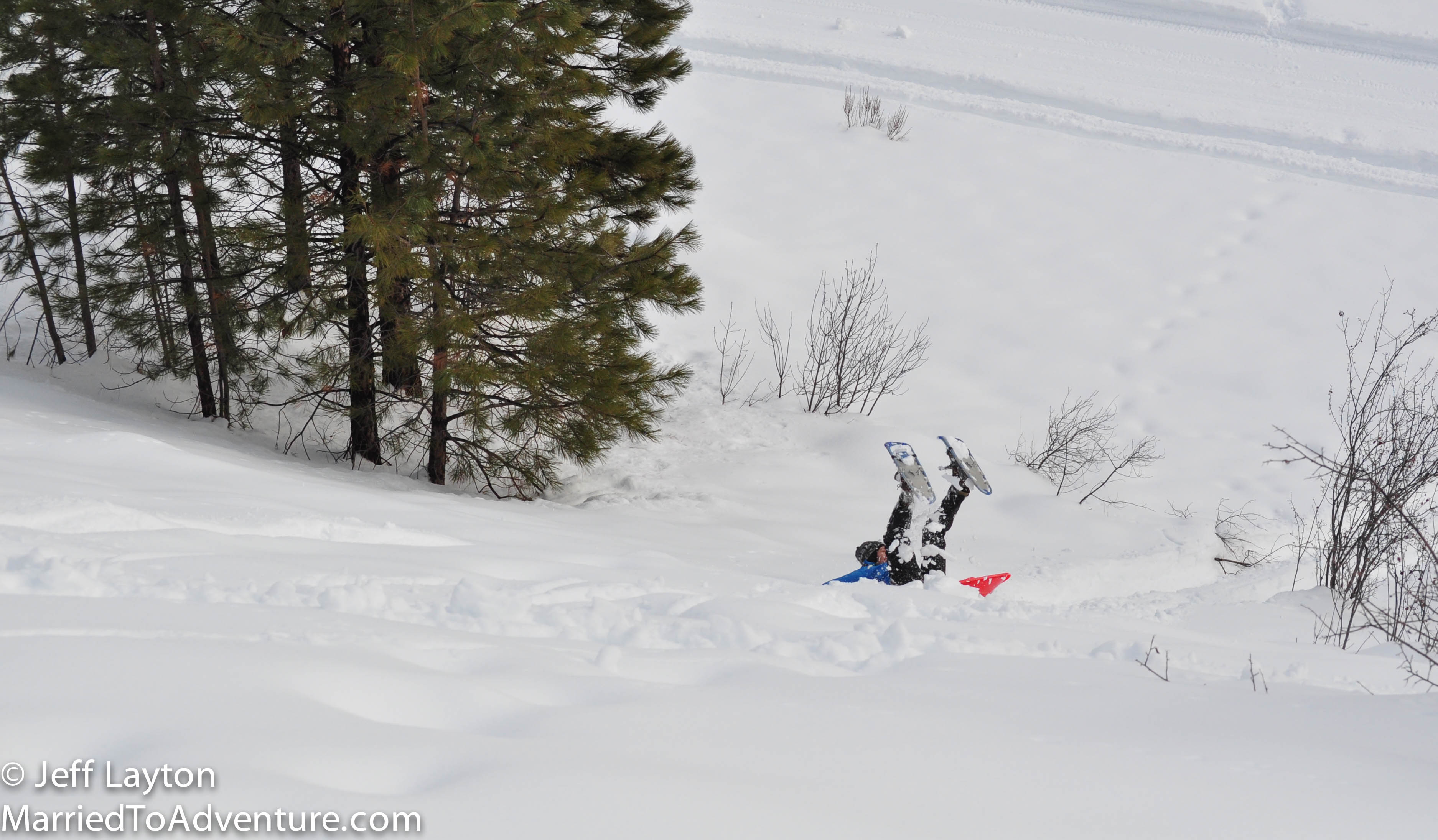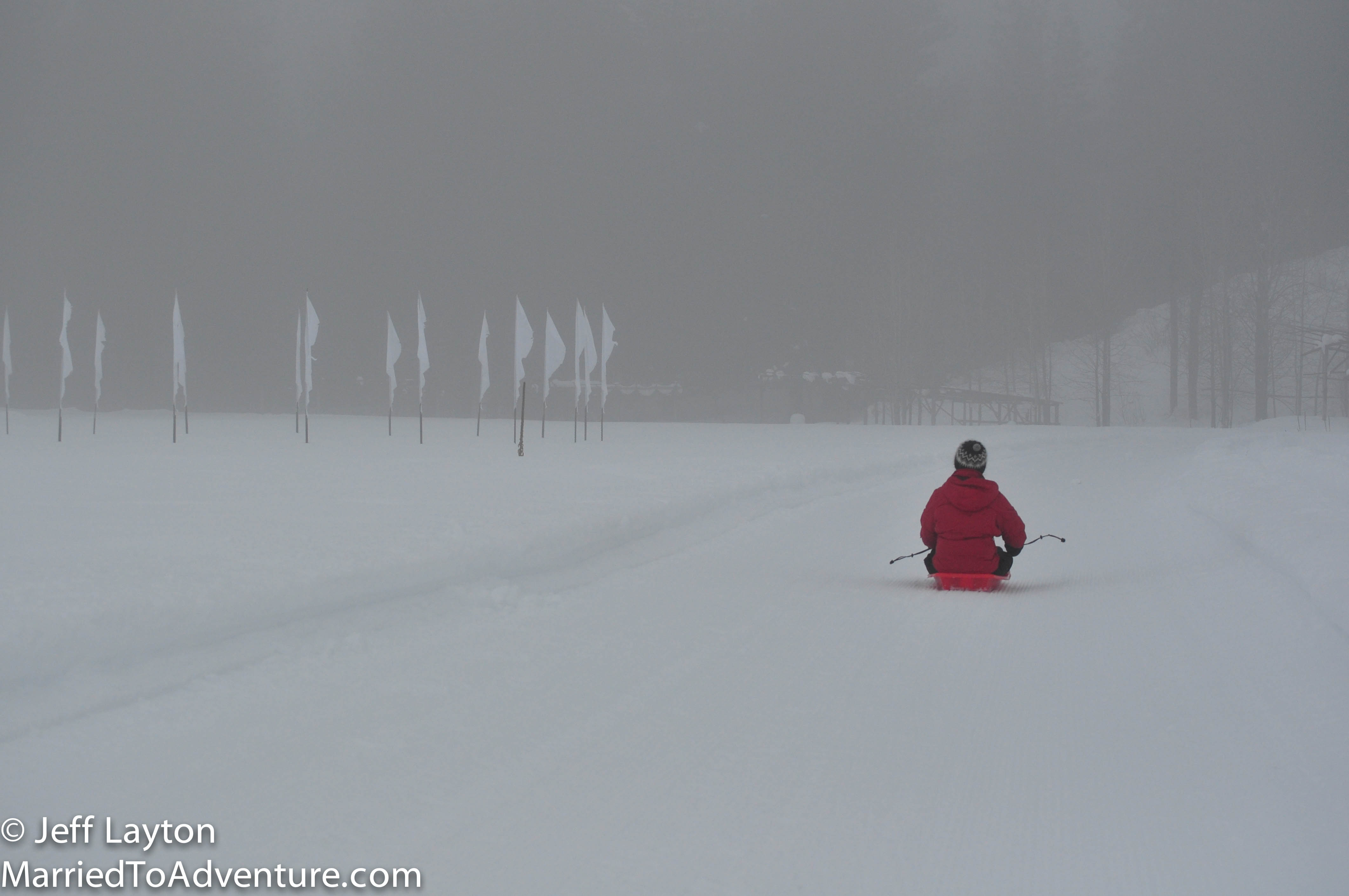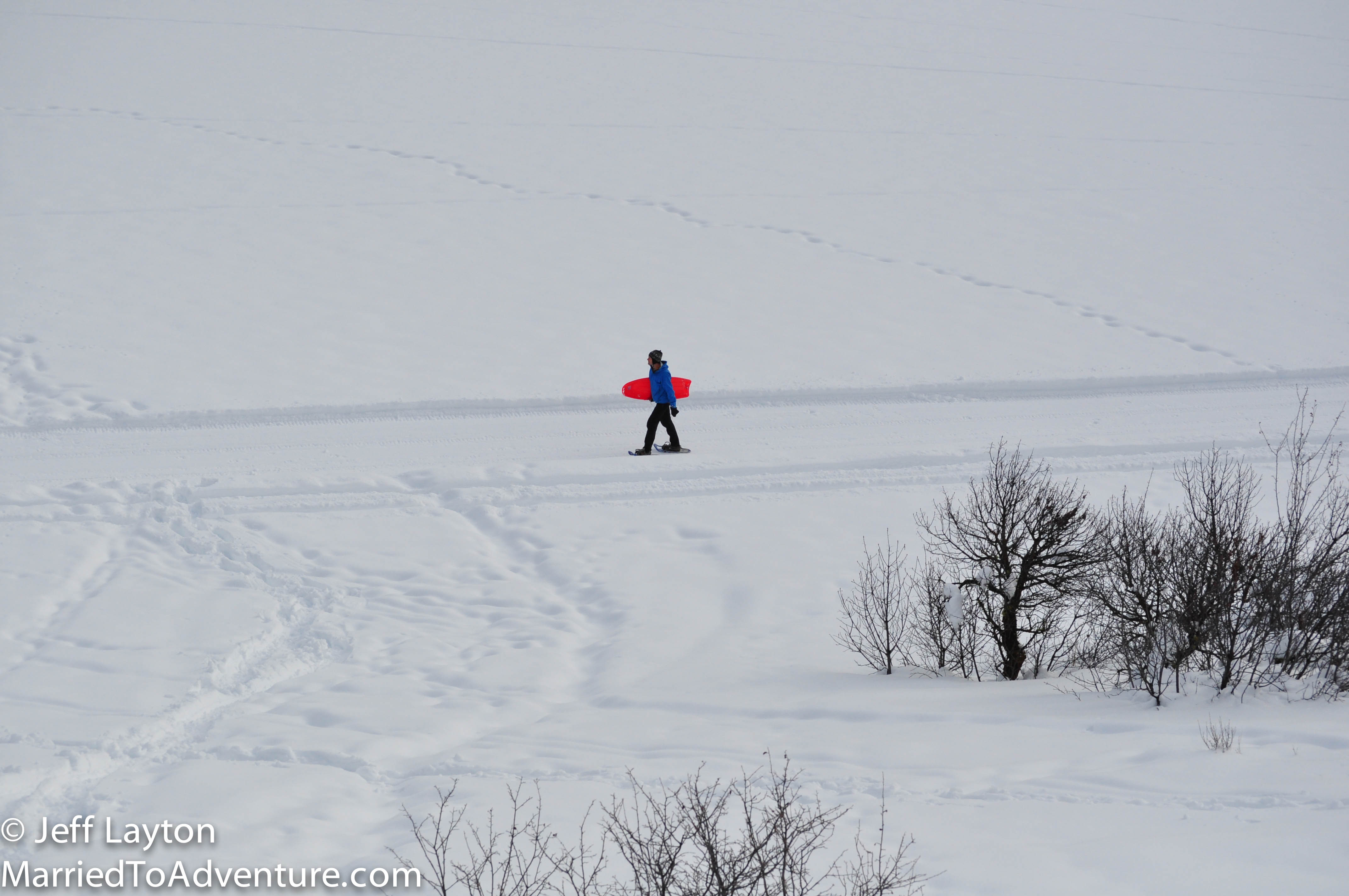Some of my favorite Calvin and Hobbes cartoons were those in which the boy and his tiger roared down a snow-covered hillside riding in a toboggan. There’s a sense of wonder mixed with a healthy “heart-in-your throat terror” that causes the characters to relish life.
I like activities that have enough danger to make them exciting. Like if I screw up, things won’t end well for my body. I’ve noticed that most people spend their time making life as safe and cushiony as possible. But that tiny element of danger helps life taste all the sweeter. Just ask Calvin.
Sledding doesn’t have to be just for kids. That same sense of terror can be experienced at the adult level if you know where to look.
Enter backcountry sledding.
When you’re in remote mountain destinations, a sled can be just as much fun as a pair of skis and way more exhilarating than a pair of snowshoes.
Growing up sledding in my Poulsbo neighborhood, we had a sledding hill and during rare snows it became so packed down that just about anything would work on it (garbage can lids, plastic sheeting, your jacket) and by lunchtime it was so slippery you couldn’t walk uphill anymore.
In the backcountry, sledding is a little bit different. The places we’ve found that are good for sled-ventures are usually just shy of avalanche steep, with billowy mounds of snow to cushion your fall. Blazing the first trail is almost always a cold calamity, but after that, you tend to scream like a missile. Except for when you don’t. Then you find yourself upside down in snow and laughing like a dork.
A few safety considerations to keep in mind. Sledding is super dangerous – insurance people and ER nurses will tell you it’s one of the riskiest winter activities you can do, so think through your actions carefully before you dive in.
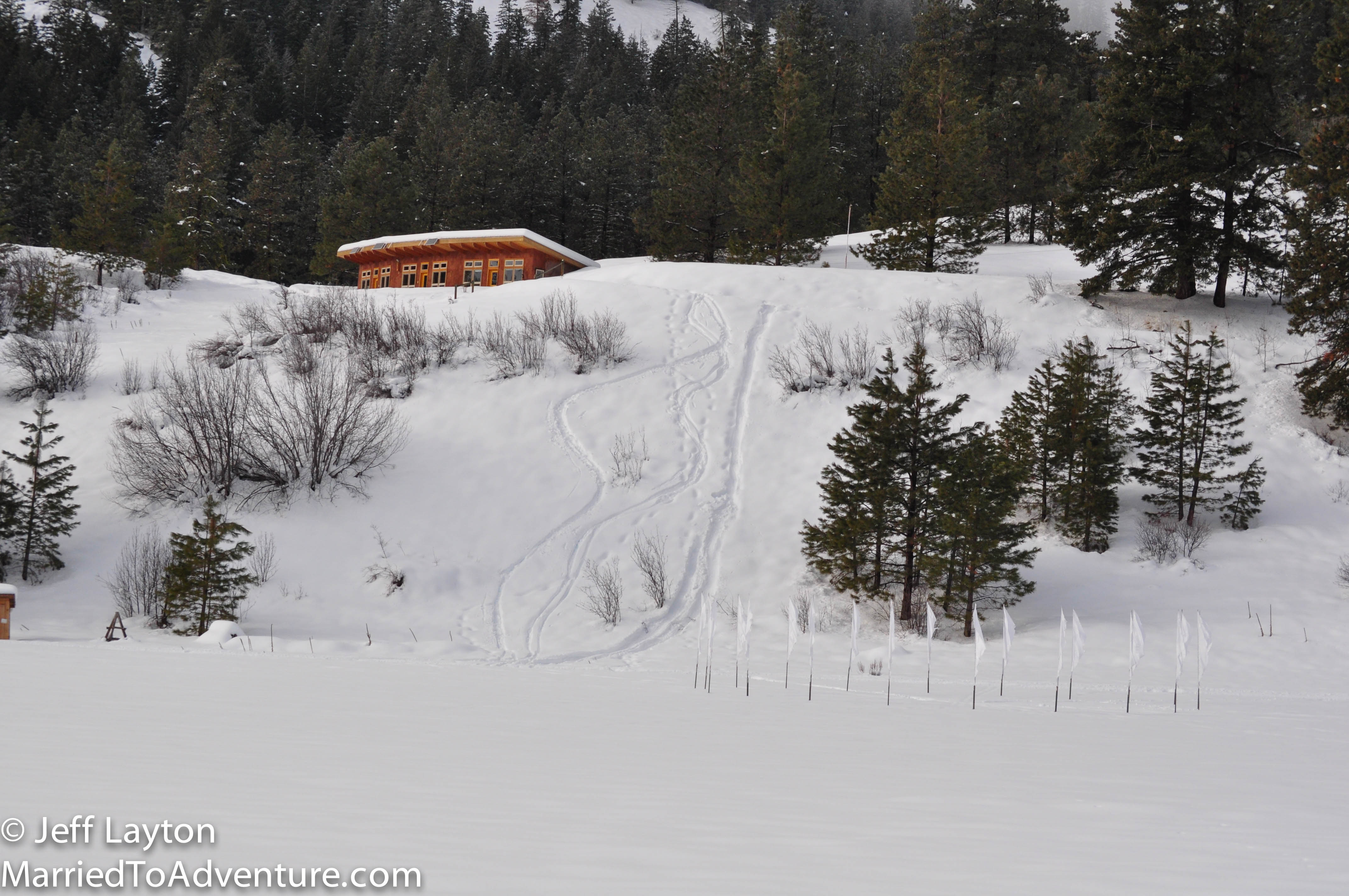
Choosing a clear path with no obstacles can be the difference between exhilaration and a trip to the ER
On our recent weekend adventure, we collided with a dog (see video below) and suffered a sprained knee when our sled disintegrated from under us on a long steep run.
With that in mind, here’s some advice:
1. A helmet is a good idea.
2. If there are potential obstacles skip it – choose a location that’s more open.
3. Choose an area with a long gradual runoff (not one the ends at a road like I saw at Mt. Baker last year).
4. Remember the point is to go sailing out of control down a mountain as fast as you can, so you don’t want anything in your way. When you crash, you want to crash in deep fluffy powder whenever possible.
5. Depending on your sled, you can steer by dragging your hands, so wear good gloves that won’t fall off.
6. Fence posts and barbed wire might lie just below the surface so do your research first.
7. Don’t sled with dogs. They’re not big fans.
